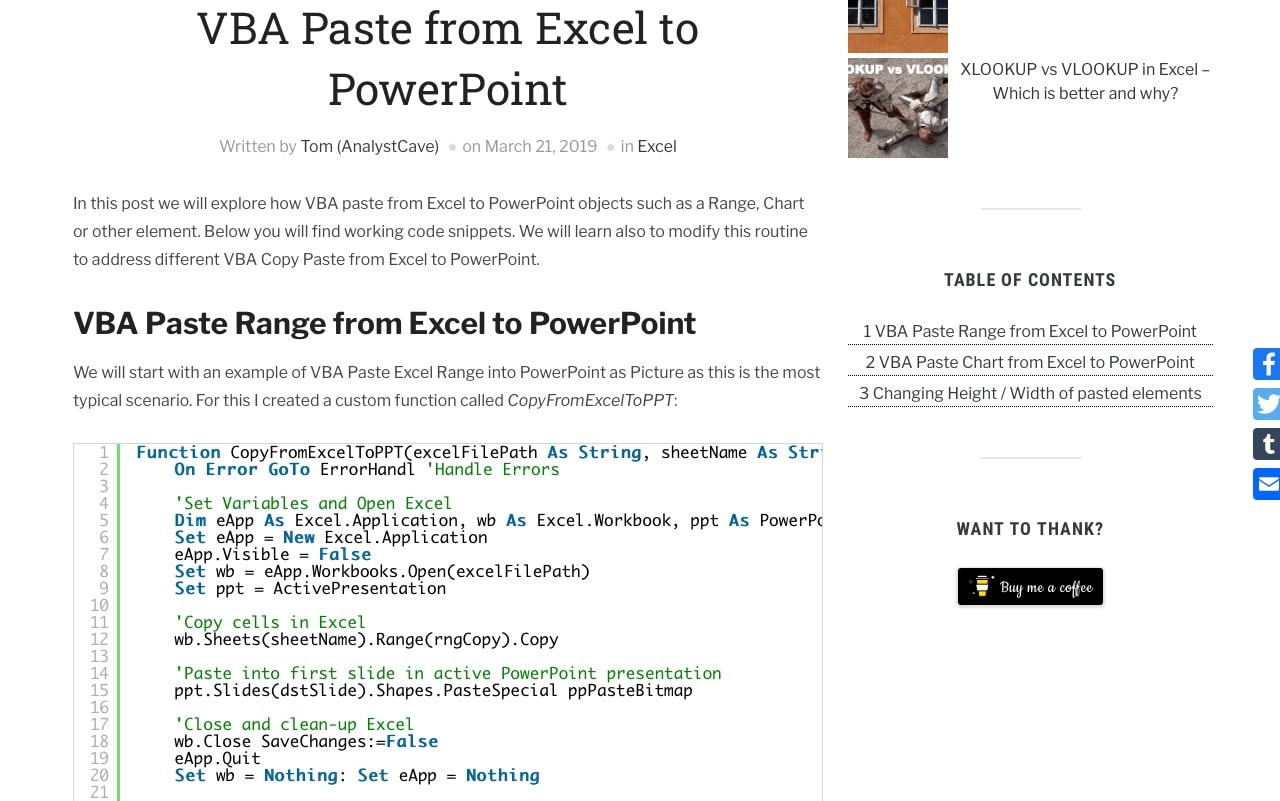

- #Peltier tech charts for excel 3.0 free download how to
- #Peltier tech charts for excel 3.0 free download code

If bDynamicArray is False, there’s no need to test for LET.Formula2 means enter the formula as a Dynamic Array formula plain Formula would simply enter a one-cell implicit intersection formula, like bDynamicArray might be False even in modern Excel, if somehow a value in a cell blocked the spill range, so we test for a spill error.Important for Dynamic Arrays, but not really needed for LET or LAMBDA. Use On Error Resume Next to avoid run-time errors while entering formulas.Turn off ScreenUpdating so nobody notices the test workbook being opened and closed.
#Peltier tech charts for excel 3.0 free download code
Here are the notes referenced in the code above: TestExcelForNewFunctions = bDynamicArray And bLET And bLAMBDA If Not bDynamicArray Then GoTo ExitFunc ' This VBA function opens a new workbook, inserts each of the new Public Function TestExcelForNewFunctions(ByRef bDynamicArray As Boolean, _īyRef bLET As Boolean, ByRef bLAMBDA As Boolean) As BooleanĪpplication.ScreenUpdating = False ' Instead of cluttering my workbook or add-in with a dummy worksheet that contained sample formulas, I can write a VBA procedure that tested for all of the new functions at once. I might instead show a message explaining that his Excel installation is woefully out-of-date and some of the fabulous features of my most excellent program will not work.
#Peltier tech charts for excel 3.0 free download how to
I wouldn’t necessarily bother my user with this message box, but it’s a good example of how to call the test functions from code. Here is the resulting message box when tested in the latest Insiders build of Excel: MsgBox TestResult, vbInformation + vbOKCancel, "Testing Excel for New Features" TestResult = TestResult & "Lambda Function: " & TestLAMBDA TestResult = TestResult & "LET Function: " & TestLET & vbNewLine TestResult = TestResult & "Dynamic Arrays: " & TestDynamicArray & vbNewLine You can test for each function as you need it, or you can test for all of them at once: Public Function TestNewFeatures() TestLAMBDA = Left$(sFmla, Len(TestString)) TestString TestLET = Left$(sFmla, Len(TestString)) TestString Set rTest = ThisWorkbook.Names("TestLET").RefersToRange TestDynamicArray = Left$(sFmla, Len(TestString)) TestString Set rTest = ThisWorkbook.Names("TestDynamicArray").RefersToRange Public Function TestDynamicArray() As Boolean Find the cell, extract its formula, and return True if it does not begin with the prefix. My module looks like this, with the prefix I’m looking for declared in a constant at the top, followed by three test functions. Remembering that I named the cells with these formulas TestDynamicArray, TestLET, and TestLAMBDA, the VBA code can examine the formulas. We can write simple functions in VBA to test whether the formulas are recognized, simply by checking for formulas with a prefix of _xlfn. One way to test for the availability of these functions is to hide a worksheet like this in a workbook or add-in. You get the same error if you try to enter the modern formula in old Excel without the prefix. If you try to re-enter one of these prefix-laden formulas in an old version of Excel, the formulas are entered, but you get a #NAME? error. If you enter a formula with these prefixes in a version of Excel that recognizes the function name after the prefix, the prefixes are stripped away and the formula just works fine. I think Excel saves new functions with this prefix to warn old versions of Excel that these are formulas from the future, and old Excel shows the stored cell values without spewing errors. Note that the new functions have a prefix of _xlfn and the arguments in the LET and LAMBDA formulas have a prefix of _xlpm. When I select a cell and type ?ActiveCell.Formula into the Immediate Window of the VBA Editor, the formula is returned. The values in parentheses after the LAMBDA closing parenthesis, 1 and 2, are used as the inputs one and two. Says input two variables one and two, then return one+two. My equally simple LAMBDA formula in cell B7:

LET Formulaīasically says, let the value of one be 1 and the value two be 2, then return the result of one+two. In order to get a spill range of two cells tall and one cell wide. Any missing parameter is assumed to be 1. Where rows and columns indicates the size of the resulting array’s spill area, start is the first number in the sequence, and step is how much greater each number is than the previous one. The SEQUENCE function develops a list of numbers using this syntax:

I named cell B2 TestDynamicArray for future reference, and entered a Dynamic Array formula in that cell.Ĭell B5 is named TestLET and contains a simple LET formula.Ĭell B7 is named TestLAMBDA and contains a simple LAMBDA formula.Ĭells C2, C5, and C7 (formatted with blue text) use the FORMULATEXT function to show the formulas in column B.


 0 kommentar(er)
0 kommentar(er)
